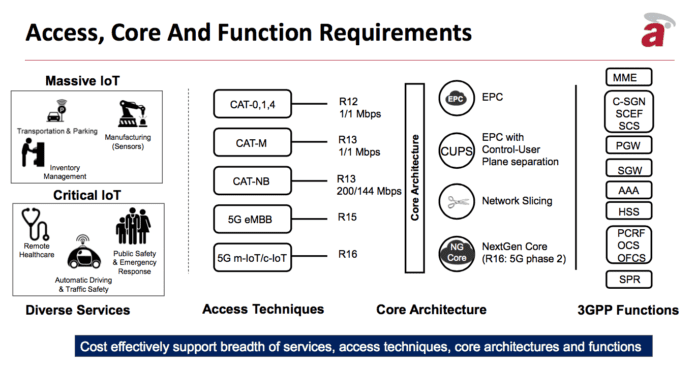Affirmed Networks discusses how virtualizing the evolved packet core will facilitate 5G network slicing for the internet of things.
BARCELONA, Spain – In the race to “5G,” operators are steadily implementing network functions virtualization and software-defined networking solutions to gradually gain software control of their networks. With more than 50 carrier deployments, Affirmed Networks was an early mover in the VEPC space and is now leveraging its know-how to take on the internet of things.
In an interview with RCR Wireless News during Mobile World Congress 2017, Angela Whiteford, VP of marketing and product management at Affirmed Networks, discussed the role of a flexible, virtual architecture in enabling the internet of things.
“The foundation of an IoT offering is a virtualized architecture,” Whiteford said. “It can support the different use cases. For the IoT business unit, being able to offer a customized slice by industry, by segment … is a game changer. Right now they have to jury rig something if they want to do something customized.”
In partnership with Tech Mahindra, Affirmed said it developed its end-to-end IoT Service Platform that includes a cellular IoT serving gateway node, service capability exposure function and service capability server. Geared toward the narrowband-IoT standard, the platform can be configured to support nonstandard IoT connectivity schemes like Sigfox or LoRa.
Subscribe now to get the daily newsletter from RCR Wireless News
Whiteford explained that an open approach to the IoT allows operators to “pick what they need. There’s not a one-size-fits-all. We want to do it in a very standard, open way. Affirmed has been very, very committed to open architectures. IoT, the technology advancement has been rapid. In order to keep up, you’re going to have to support an ecosystem of vendors.”
She also emphasized the goal is to help operators address enterprise clients in an approach based on “empowering them and not competing with them. [Operators] want to go direct to the enterprise and offer that end-to-end suite.”
Circling back to the idea of a “customized slice,” this idea of using software automation to create bespoke data pipes that meet the specific service requirements of a particular application is fundamental to the vision for 5G. Whiteford said Affirmed’s VEPC is “5G-ready. You need to be able to move the devices closer to the edge,” while centralizing the control plane. “It’s fairly easy for us. From a mobile operator perspective, they all like to hear if I’m investing in a VEPC right now, I can do these capabilities now.”
In addition to launching its IoT play during MWC, Affirmed also announced a deal to provide Truphone with a VEPC that integrates a virtualized Wi-Fi solution, and a partnership with Juniper Networks and Netronome that resulted in a carrier-grade cloud solution that can be used to deploy mobile subscribers service virtual network functions.

